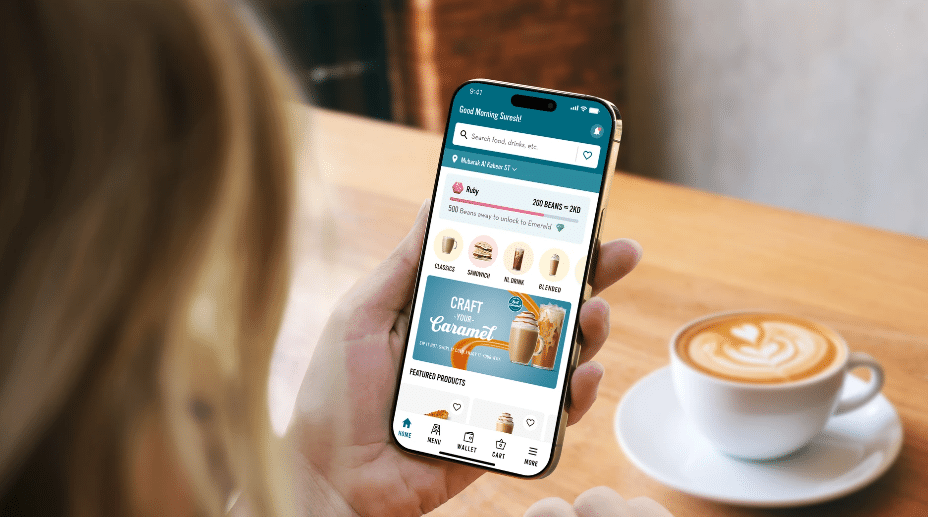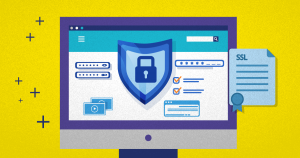Digital transformation has completely changed the relationship between companies and consumers.
Currently, to be successful in such a competitive and disputed market, it is essential to have the necessary resources so that the user experience with your brand is the best it can be.
Thus, the concept of Customer-Centric is gaining more space within different companies. With actions aimed at consumer satisfaction, the goal is to achieve greater loyalty and, consequently, an increase in sales.
So, how about understanding better what this strategy is and what you need to do to start it in your organization?
Don’t miss out!
- What Does It Mean To Be Customer-Centric?
- What Is a Customer-Centric Example?
- Why Is The Concept of Customer-Centric So Important?
- What Are The Main Challenges of Centering On The Customer?
- What Steps Can You Take For Your Company To Become Customer-Centric?
- What Are The Main Metrics to Measure This Kind of Strategy?
- Which Companies Are Good Examples of a Customer-Centric Strategy?
What Does It Mean To Be Customer-Centric?
A company considered to be Customer-Centric has its main characteristic the centralization of all strategic planning on the customer.
In other words, everything that is carried out within that organization aims to provide a satisfying experience for its consumer.
From the first contact with the user — by then still a potential client — throughout the different stages of the buyer’s journey, until the after-sales services, all conversion strategies are designed for the customer to feel at ease with your brand.
From a detailed study of behavior — by understanding your users’ preferences, desires, goals, and difficulties, it is possible to put these changes into practice, thus ensuring a positive impact. Whether to improve a service or launch a new product, the customer is the focus.
The main objective when applying Customer-Centric techniques is to increase the loyalty rate of your business. Consequently, your company will be able to achieve better results at the end of each month.
What Is a Customer-Centric Example?
Imagine that you run an e-commerce store specializing in women’s clothing and accessories.
Despite your success online, you’ve discovered through your buyer persona research that your customers crave the in-person shopping experience. To address this, you’re considering opening a physical store to better meet their needs.
After all, the focus needs to be on the customer rather than on your initial planning of focusing exclusively on online shopping.
Similarly, let’s say you own a traditional coffee shop.
You’ve noticed a decline in sales, indicating a shift in customer preferences. Rather than sticking to your traditional model, you decide to embrace technology by introducing mobile ordering and payment options.
This adjustment aligns with your customers’ evolving needs and preferences, ultimately enhancing their experience.

Why Is The Concept of Customer-Centric So Important?
It may even seem a bit of an exaggeration to turn your strategic actions to the customer’s opinions or needs, right?
However, the market requires that companies adapt quickly and leave their initial planning behind if the consumer’s profile indicates a different direction.
In the hypothetical case above, your initial planning could be not to have a physical store to avoid expenses or even facilitate business management.
However, if your clients demand a space where they can try on clothes and accessories, you must consider this option to make the customer experience even better.
After all, research shows a direct relationship between customization and conversion, with 86% of users pointing out that an exclusive and personalized service is a major factor in their purchase decision process.
How can we ignore such favorable numbers achieved by those who care about customer experience?
It is important to emphasize that the focus on the consumer must be taken into account at all stages.
One negative experience is enough for the client to rethink the decision to buy from you in the future. According to studies, 58% of users do not return after a bad experience.
Therefore, ensuring that the customer feels comfortable and at ease when engaging with your company — at any and all stages — is no longer an advantage but an obligation for anyone who wants to succeed in the market. The price of not worrying about every detail can be high.
What Are The Main Challenges of Centering On The Customer?
Even though companies need to succeed in today’s market, applying Customer-Centric strategies is no easy task. After all, this concept’s main challenge is understanding — or even better, anticipating — the desires and demands of your clients.
The main challenge faced by those who want to truly put the customer at the center of the organization is implementing this culture among all sectors and employees.
It is not enough to offer the highest quality product at the best price if customer service, for example, leaves your client unsatisfied.
You need to guarantee that everyone who is a part of your organization, from the highest level leaders to a newly hired intern, is aware of this.
Ensure that every touchpoint the client has with your company is a satisfying, unique experience. A phone call to complain about something will lead to a positive evaluation after the problem is resolved.
Besides, there is the difficulty of carrying out strategic planning aimed at the consumer experience. Often, the company’s idea is to follow a path — whether for financial or strategic reasons — and it is necessary to know how to adapt it to what the customer is actually looking for.
That is, being able to leave a more advantageous strategy for the company aside in exchange for what prioritizes the customer even if, at least in the short term, it does not offer the same benefits.
After all, the concept of Customer-Centric is long-term, with clearer results appearing after a long period of loyalty and strengthening the relationship with the customer.
What Steps Can You Take For Your Company To Become Customer-Centric?
Now that you have understood what it means to be Customer-Centric, what are the main characteristics of this strategy, and the main challenges to be faced, it is time to put some actions into practice.
For that to happen, we have selected some tips for your company so that it can put its customers at the center of attention in the right way. Check it out!
Have customer-oriented leadership
To create a culture that values the customer experience, the first step must be to have leaders — that is, decision-makers — who share this thought.
Count on leaders who understand the importance of valuing the consumer and positively impacting the company.
With decision-makers who invest in strategies with this focus, it is possible to establish a culture at different levels of the company’s hierarchy.
Understand your client
To provide the best possible experience for your clients, you need to have profound knowledge of what are their desires, challenges, and goals, as well as how they behave in general.
You can use CRM (Customer Relationship Management) tools, for example, to make this task more efficient.
Only with a complete analysis of your customers’ profiles, you can be sure of your decisions when customizing the services and products offered.
After all, it is only by understanding what they are looking for that you can adapt your company.
Invest in different relationship channels
Nowadays, there are many possibilities for communication between companies and consumers. Therefore, a differential for the customer may be the diversity of channels available for contact.
That means you need to ensure an omnichannel service, which allows your clients to contact you via whichever means they prefer.

Empower your employees and encourage autonomy
By encouraging autonomy among your employees, it is possible to eliminate bureaucratic processes within your organization. Thus, you guarantee an agile solution to the client’s problems, making sure your consumers will not be unsatisfied with a prolonged, time-consuming customer service process, for example.
In addition, autonomy allows your employees to feel more comfortable making decisions that benefit the consumer’s experience. They can then use creativity and different resources to make processes more efficient.
Track your performance
As we said earlier, the work of a Customer-Centric company does not end when closing a sale. Monitoring the performance of your strategies is vital for your clients to remain, in fact, satisfied with the service and/or product they have purchased.
Take feedback as an opportunity to improve
In addition to regularly monitoring your strategies’ performance, you need to be aware of the feedback given by your customers. By studying them, it is possible to establish constant improvements in your service.
What Are The Main Metrics to Measure This Kind of Strategy?
Even after putting strategic planning into action, and focusing on the consumer experience, the work is not over yet. It is essential to remain focused on that same objective: increasing loyalty.
To accomplish this, you need to monitor the performance of your strategies. How? Use a few metrics that indicate whether your planning is being efficient — and, if not, what you need to do to improve. To make your job easier, we have listed below the main metrics to an eye on.
Churn
One of the words most feared by any business person is Churn, which stands for the cancellation of a service or contract.
There is no point in attracting more new clients if, on the other hand, other customers of yours are leaving you — thus generating a high Churn Rate.
Lifetime Value (LTV)
Another important metric for you to monitor closely is Lifetime Value (LTV), which measures your company’s profit concerning a certain customer. That is, what were the profits generated for your business from the moment that user became a consumer of your brand?
Net Promoter Score (NPS)
To measure your client’s level of satisfaction, you can use the Net Promoter Score (NPS).
The idea of this tool is to decipher the percentage of customers that are “brand promoters”, “neutrals”, or “detractors”.
This allows you to better understand who might be thinking about leaving your business and who is satisfied with the service offered.
Which Companies Are Good Examples of a Customer-Centric Strategy?
To give you an even better idea of what it means to be Customer-Centric, we have selected two companies that can be considered examples of consumer experience. Check them out!
McDonald’s
Thanks to its investments in Customer-Centric strategies, the North American fast-food chain has gained an even deeper understanding of what its clients are looking for.
Whether by its actions on social media or even in the in-depth study of customer behavior, McDonald’s overcame the competition of some brands that were beginning to challenge its domain.
With Big Data analysis, for example, the company realized that its customers missed healthier options on the menu and started to make breakfast items available at other hours of operation.
Another example is the possibility for clients to place their orders through a totem at physical stores, leading to more digital, innovative possibilities.

Hilton Hotels & Resorts
The chain of hotels and resorts started investing in customer loyalty programs, with campaigns that guarantee points for those who use the company’s services.
It’s similar to a mileage program, where the consumer accumulates points that can be exchanged for discounts and other benefits on the chain.
Even though Hilton masters its market, the company identified this demand from its target audience and, therefore, decided to invest in reformulating the program.
Even with customers already satisfied with the current service, Hilton managed to generate even more value for its brand and focused on providing the best possible experience for its consumers.
Now that you understand the importance of a Customer-Centric strategy, make sure you offer the best experience possible.
You can begin by crafting high-quality content that addresses your audience’s needs. But you don’t have to go it alone—WriterAccess is here for you.
As a content creation platform, we offer vetted writers, designers, and industry experts to assist you in creating customer-centric content. Start your free trial today!







